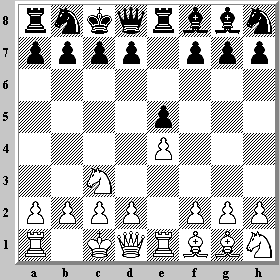A little thought convinced me that 1.e4 was a good first move. It opens diagonals for the Queen and light-squared Bishop, just as in traditional chess, with the added bonus that the e-Pawn is defended by the central Rook. My opponents must have used similar reasoning because they both played 1...e5, to which I answered 2.Nc3. That brought the games to the diagrammed position.

1.e4 e5 2.Nc3
In the first game, my opponent played 2...f6, activating the other Bishop, and I followed suit with 3.f3. Now, however, he (she?; Chess.com users are mainly anonymous) overplayed his (her?) position with 3...d5. This let me snatch the Bishop pair with 4.exd5 Bxd5 5.Nxd5 Qxd5, then menace the Queen with 6.Bd3. I thought I already the better game, but my opponent blundered a few moves later and resigned on the 16th move.
In the second game, my opponent followed my lead by playing 2...Nc6. This let me interfere with his normal development by playing 3.Bc4, when 3...f6 is not possible. He copied me again with 3...Bc5, but after 4.Ng3 g6, I forced his Bishop off the active diagonal with 5.Na4. He retreated with 5...Be7, then after 6.f3, tried to copy my plan with 6...Na5. Following the idea I used in the first game, I played a better retreat with 7.Bd3, leaving e2 for the Queen. Now after 7...f6 8.Qe2 Nf7, I was able to castle 9.O-O-O and again felt I had the better game.

No comments:
Post a Comment